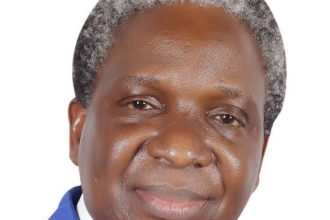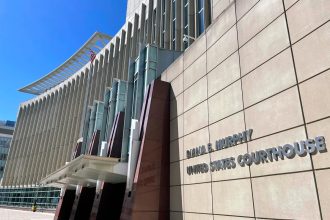The late conservative icon Antonin Scalia said that if it were up to him, he would “put in jail every sandal-wearing, scruffy-bearded weirdo who burns the American flag.” The Supreme Court justice then acknowledged: “But I am not king.”
Fast-forward to Monday, when President Donald Trump felt the need to clarify that he is “not a dictator” on the day that he signed an executive order calling for flag-burning prosecutions.
During the Oval Office ceremony, the president lamented that a “very sad court” — “I guess it was a 5-4 decision,” he said — “they called it freedom of speech.”
He appeared to be referring to long-standing Supreme Court precedent on the subject. In a 5-4 decision joined by Scalia, the court said in 1989’s Texas v. Johnson: “If there is a bedrock principle underlying the First Amendment, it is that the government may not prohibit the expression of an idea simply because society finds the idea itself offensive or disagreeable.”
The court sided with Gregory Lee Johnson, who burned the flag in 1984 in Dallas during the Republican National Convention. The majority recounted that Johnson participated in a political protest called the “Republican War Chest Tour” against the Reagan administration and “certain Dallas-based corporations.” The majority said Johnson was convicted for “expressive conduct” and that he “did not threaten to disturb the peace.” It said the state’s interest in “preserving the flag as a symbol of nationhood and national unity” couldn’t justify his prosecution.
The majority said the way to “preserve the flag’s special role” isn’t to punish people who disagree but rather “to persuade them that they are wrong.”
In a follow-up ruling in 1990’s United States v. Eichman, the court struck down federal flag-burning prosecutions under a law passed by Congress in response to Texas v. Johnson.
With that background in mind, let’s take a closer look at the new executive order.
While its performative political aspect is clear, a notable legal aspect is the degree to which it acknowledges the limits of Trump’s power in this area. Though the order instructs the attorney general to prioritize law enforcement actions against flag-burning, it caveats these instructions by saying to do so in ways “consistent with the First Amendment” and “to the maximum extent permitted by the Constitution.”
In other words: Do everything you can, except where you can’t. It’s unclear where that leaves any enforcement actions in reality.
So, the order’s legal effect is fairly limited by its own terms, putting aside whatever chilling practical effect it might have on people’s conduct — something that can’t be ignored these days.
Like anything else, the true legal effect of the executive action, if any, would need to be tested in court. If a 2025 version of the Johnson case comes along, we may find out if today’s high court is one that Trump would likewise deem “very sad” on the subject.
Subscribe to the Deadline: Legal Newsletter for expert analysis on the top legal stories of the week, including updates from the Supreme Court and developments in the Trump administration’s legal cases.
This article was originally published on MSNBC.com









